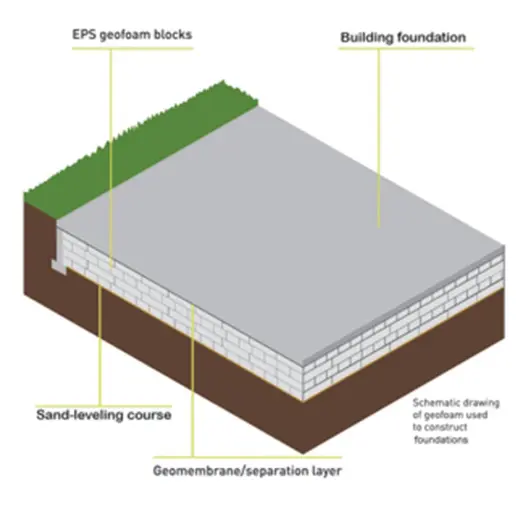When a road or bridge is built or expanded, the engineers in charge of the project are tasked with considering current traffic levels and future traffic levels. The implementation of conventional filler material to such structures is problematic as it has the potential to lead to numerous unanticipated setbacks. Conventional fillers have the potential to lead to a spike in loads and spur problems with the overarching roads and bridges as well as structures below. Expanded polystyrene (EPS) geofoam is the answer.

EPS geofoam ensures such problems do not arise. Geofoam boosts load capacity, is lighter than conventional fillers such as soil and serves as an elastic material with strain up to one percent. Geofoam’s use as a compensating foundation decreases the load on the compressible soils below, reduces building settlement and decreases the chances of bearing capacity issues. In fact, those who use geofoam as compensating foundation are quick to testify it reduces the amount of maintenance that is necessary across posterity.
Opt for geofoam and you won’t have to worry about staging, preloading, pilings and surcharging that almost always pose problems when other materials are used. Geofoam combats moisture, resists decomposition and holds strong against water and other forces. Geofoam ultimately reduces the lateral loads on retaining walls, cuts gravity loads and provides an invaluable peace of mind. This material is so easy to work with that it can even be installed amidst a heavy rainstorm. The geoblocks are sent directly to the job site in the desired size for quick and easy installation.